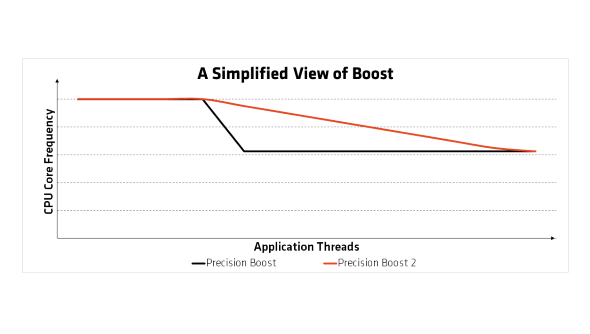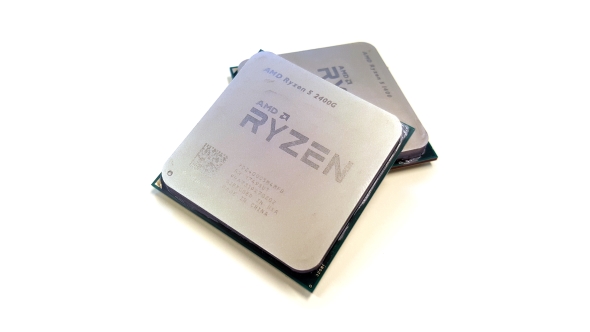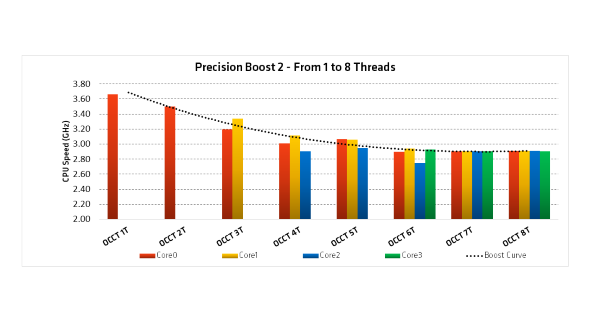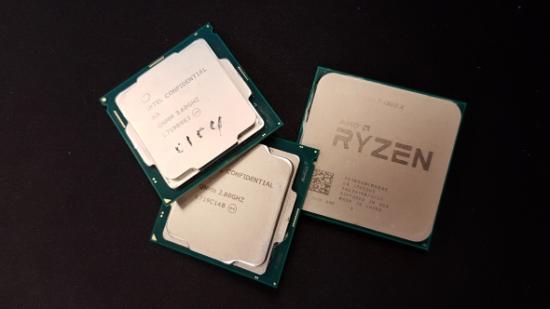Back when AMD’s Ryzen first launched there was a fervour within the PC building community that I, or anyone else cuckoo for computer parts, hadn’t seen in a very long time. AMD are back – and they are competitive. Not to take away from their accomplishment with this stellar return to form, but the big question everybody wanted to know was: does AMD’s Ryzen match Intel’s top Core processors?
Want to see how AMD’s Ryzen currently stacks up against the competition? Here are the best CPUs for gaming.
The answer was, sadly, a fairly resounding no. That didn’t mean these chips weren’t capable of something spectacular – they had multitasking chops for days, you could overclock them for tier-jumping performance, and they were cheap to boot. The crown of best gaming performance, however, was still resolutely on Intel’s head – thanks to their leading single core performance.
That could all change with AMD’s Ryzen 2 (or Ryzen second-generation Pinnacle Ridge Zen+), and this launch could see gamers with loyalties only to their precious frame rates (likely a lot of us) swap over to the red team for the first time in over a decade.
We’ve already been promised a 10% performance boost through the transition to the 12nm GlobalFoundries process node alone. And, while the big architectural changes won’t arrive until Zen 2, the improved SenseMI tech could be where serious performance improvements lie for gamers.

With the first generation of Ryzen chips, the rated boost clockspeed was hindered by the Precision Boost technology. This tech allowed for clockspeeds to be adjusted depending on real-time monitoring of load (but also thermals and power). Any load demanding use of three or more cores would be limited to a lower clockspeed than one that utilises only one or two. This caused Ryzen chips to downclock considerably when higher thread counts were in use.
Unfortunately, games have a tendency to offload at least some work to cores that are otherwise left dormant. This means that, paired with the original Precision Boost algorithm, clockspeeds were often needlessly dropped under even somewhat low-core-demand loads. Frame rates were lower than their Intel counterparts and the gaming community took note. For streamers or heavy multi-taskers, it wasn’t so much of an issue – but it was detrimental to gaming-only machines.
The second-generation of Ryzen chips are promising to iron out the kinks in this algorithm, and we don’t even need to trust AMD’s word alone that they plan to deliver on this promise. We’ve already seen Precision Boost 2 in action with AMD’s first 2000-series processors, the Ryzen 5 2400G and the Ryzen 3 2200G.

While these chips aren’t quite the top-tier parts we gamers often prefer for our supercharged rigs, they make for affordable APUs with a bite as big as their bark. What makes these processors such standout candidates for budget builds is the potential to eventually replace the Vega architecture built onto the chip with a discrete GPU – a move made worthwhile by these chips fantastic standalone CPU performance, helped along the way by the improved SenseMI tech.
That’s not the only improvement we are going to see with the Zen+ design, however. Tack on higher clockspeeds across the board to go with that new algorithm and you will only further improve the in-game performance on offer with AMD’s latest generation.
It seems likely that these processors will receive, at least, a 200MHz clockspeed bump – although the first second-generation chips to release, the 2400G and 2200G, already push their clockspeeds further even without the 12nm process. The first generation Ryzen 5 1600 runs at around 3.4GHz in-game, 200MHz shy of the chip’s full 3.6GHz boost clock. With Precision Boost 2 in hand, the second-generation Ryzen 5 2600 could potentially reach much closer to 3.8GHz under gaming load – near to a 400MHz boost in-game, at a minimum, from the generational upgrade alone. A prospective Ryzen 5 2600X could then run at something near to 4.2GHz when you’re gaming. Fun times.

These higher and more consistent clockspeeds could make all the difference to frame rates – especially the minimum frame rates – and could be a bullet with Intel’s name etched onto it for team red. So long as Precision Boost 2 and the 12nm process can deliver, that is.
The weaker gaming performance has allowed Intel the advantage when it comes to the coveted spot as de facto processor among gamers. Despite being caught off guard by Ryzen’s legitimately strong performance (it was surprising after… well, the less said about Bulldozer the better), and even with their recent success this past year, AMD still have a lot of market share to recover if they ever intend on becoming the BNOC of gaming chips.
If Ryzen truly was the worst-case scenario, however, then the only way is up – if team red can get their upcoming launch off without a hitch. Gamer’s initial hang-ups regarding lagging gaming performance versus Intel’s Core processors could be short-lived once Ryzen 2’s April launch window comes around. AMD can also capitalise on potential customers who were apprehensive of Ryzen, due to AMD’s track record, who may finally be swayed to the red side by their continued momentum.
Precision Boost, XFR, and the other improvements coming with the Zen+ design could open the door for AMD to take the gaming throne from Intel, eventually. You might want to Febreeze that chair before you sit down though, AMD, as Intel have been lounging in it for quite some time.
